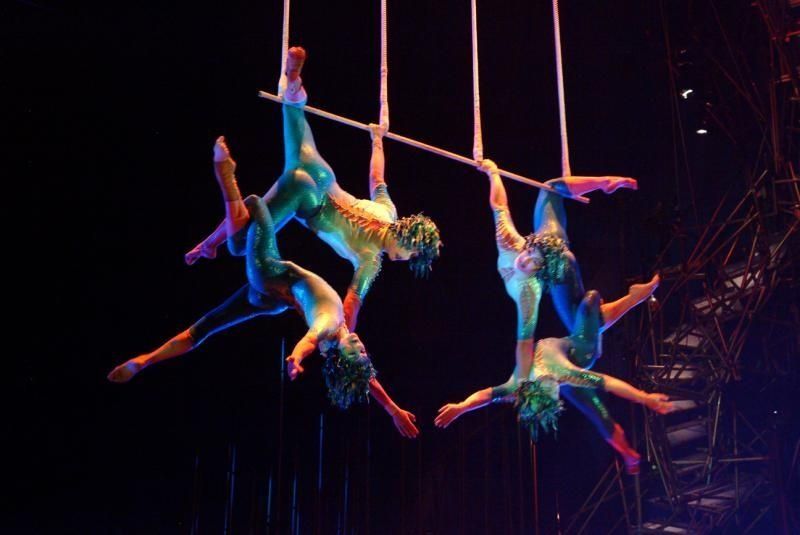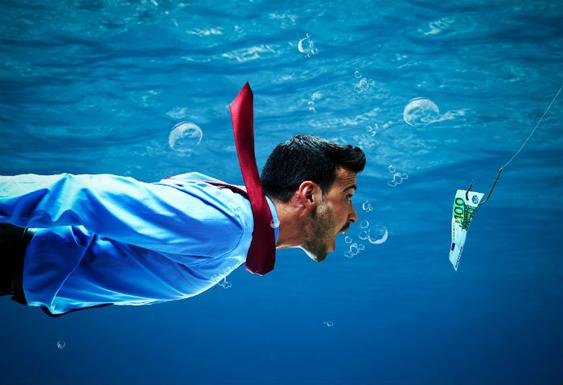I will start this post by recommending the reading of the book "Blue Ocean Strategy" written by W. Chan Kim and Renée Mauborgne in which they reaffirm the importance of innovation when opening new markets, seeking to move the company away from the markets more exploited. In their book, they raise the possibility of creating a winning strategy based on "non-competition", something that is only possible by exploring new markets, which they symbolize with a blue ocean, contrary to the red that represents the fierce struggle between companies.
Since the publication of this book in 2005, the companies of the planet have tried to find and implement this type of strategy to obtain competitive advantages.
Red Oceans vs. Blue Oceans
Kim and Mauborgne explain their innovative concept through the now famous metaphor of the two oceans. In this case, the Red Oceans are the existing industries, the known markets. In the Red Oceans, the limits of the industry are known and accepted, the competitive rules are known to all. In these markets, the growth of the company depends on stealing customers from rivals. As market space fills with competing companies, commodities become commodities and price becomes the main competitive variable. The competition is ruthless. It's a Red Sea of blood.
The Blue Oceans, on the other hand, are the industries that do not exist yet, they are unknown markets where the rules of the game have not yet been established. And the company that is capable of creating a Blue Ocean, will not have to worry about the competition, simply because it does not exist. Thus, your only concern will be to create new demand for your product or service, enlarge the cake.
And the key to creating a fast-growing Blue Ocean is Innovation in Value through the redefinition of the business model. A great example in this regard to illustrate the creation of a Blue Ocean is the successful Cirque du Soleil.

The modern version of the circus was born in England in the late eighteenth century. There emerged the concept of the same track, of a series of shows with clowns, tigers, tightrope walkers and jugglers. At the end of the 20th century, the attraction of the circus began to diminish, with the massification of new forms of entertainment such as TV, videogames and the Internet.
Two former Canadian street artists called Guy Laliberté and Daniel Gauthier reinvented the circus business through an Innovation in Value. In this sense they defined that one of the keys to success has been the redefinition of the concept of the show. The circus ceased to be a succession of equilibrists and clowns to become the representation of a story that advances through the articulation of these specialties. Another radical change was the elimination of numbers with animals, which required large maintenance costs.
The result was Cirque du Soleil, a success based on the creation of a new market space and the construction of a global brand.
In which cases can we apply the Blue Ocean strategy in the company?
The secret is to know that, on occasion, the Blue Ocean Strategy may appear. And in other cases, no. Understanding it well, we could avoid a good part of the failures in the attempts to apply this methodology.
In markets where the business model is in crisis. For example, fashion, music, hospitality, transportation, or tobacco. In highly commoditized markets. That is, where all companies offer similar products and services. For example, mobile telephony, cable television, internet and credit cards.
In all these cases when there is strong pressure on prices and margins throughout the value chain. This results in low rates of profitability and generates the need to seek to exit the trap by rethinking the business model.
In short, the blue ocean strategy implies the search for a new business model. So, if our company does not need a new business model in the short term, then we do not need to apply the concepts of the blue ocean.
Success stories applied in the world
Apart from Cirque du Soleil, Zara and Ikea also succeeded in applying the Blue Ocean strategy.
One of the greatest risks that any organization faces is to let ideas with high-growth and transforming potential pass by, although at first sight they may seem useless. This is the case of ideas such as Nestlé's Nespresso, which underwent an interesting internal restructuring before becoming the Blue Ocean that we all know. Something similar happened with the Post-it of 3M, that saw the light because its creator devised a strategy of guerrilla to obtain its approval.
When it comes to disruptive innovations in the company, they are likely to die before being presented to a corporate committee designed only to work on incremental innovations only ... and traditional methods to validate their success (market studies, etc ...) are negative and useless to assess the impact of disruptive innovations.
How can a market value the interest in a product that it does not know or in a product that substantially changes the way of doing things? How did Nespresso to take your product to the Blue Ocean?
In this case, the innovative team of the Nespresso product had to fight in Nestlé against all odds to bring the product to the largest consumer market, leaving aside the machines installed in the large corporate companies.
- a) First of all he had to fight against market studies, one of the most insidious enemies of innovation (which usually comes with his "common sense" buddy). In this case, the market studies considered that the household customer would never be willing to pay for the target price of the product.
- b) With this scenario, the traditional mechanisms of capture of ideas stopped the project, considering it too risky and with few probabilities of success (according to the criteria that they knew and without considering if they were the only ones) ... but even so the team persevered, fought and he did reach the top management.
- c) Once the project was authorized, the team soon discovered that the business model they proposed was in conflict with the one implemented at Nestlé, and that they encountered barriers at every step. Then Nestle CEO Peter Brabeck fervently believed in the idea and authorized Nespresso to become a separate company (model of ambidextrous organization that we will be writing in a post later) located in a different building ... the only way to achieve that new model without the constant noise generated by the other divisions of the company.
- d) Finally, and in order to escape the trap of "here we have always done things this way", Yannick Lang, a young executive from Philip Morris who convinced the company to bypass the traditional channel (supermarket), joined the project. and create a different distribution approach.
On the other hand; The Post-it product was positioned in the market in the world by the determination and constancy of Art Fry (its inventor in 3M), since the adhesive rubber was developed by Dr. Spence Silver in 3M, but it was Fry who discovered his true potential in the market.
Art Fry returned to the adhesive when I observed how complicated it was to leave markers in his hymn book of the Church he attended decided to present it to his company, 3M, to propose its commercialization. Although the idea was interesting, it was discarded by the 3M management team because it lacked real utility. Fry, instead of surrendering, proposed a guerrilla tactic: he periodically distributed post-it blocks to the secretaries, encouraging them to use them in their internal communications and with their managers. Once it had become commonplace in the company, Art Fry stopped supplying them. Then, the small internal rebellion organized by the secretaries was enough proof to prove its usefulness, so 3M immediately opted for its commercialization. This is how the company managed to reach the Blue Ocean, with a disruptive innovation that they managed to patent in the world.
Returning to the subject, in the companies I consider there are many lessons that we could extract as the previous cases and that surely some of you has happened to me. But the most important thing is to generate the propitious mechanisms so that innovation in companies is generated systematically and always points towards a Blue Ocean as we have seen.
Below I will list some generalized lessons for companies that become indispensable:
1) The processes of innovation and the capture of ideas with a hierarchical approach or oriented to incremental innovations can act as barriers that prevent disruptive approaches from coming to light, for that reason alternative ways of the process must be designed.
2) If we try to raise things from our experience (as a company or as people) we will be losing a lot of information. Sometimes someone outside our company, or even our industry, can see beyond (often the trees do not let us see the forest). It is therefore important to incorporate people in the processes that contribute with the initiatives through open innovation processes with the aim of revolutionizing the markets.
3) Although elements such as market analysis and focus groups can be very useful on certain occasions, they are more a barrier to generating disruptive innovation in companies. In those cases, we must try to look further and make real tests with prototypes to assess true potential.
4) Sometimes if a line of business or product breaks with the schemes of the company (business model, light vs. heavy processes ... etc) it is smarter to give it its own entity. In addition, the sense of ownership that this generates is one of the biggest incentives that the innovative team can have. Here ambidextrous organization models must be implemented.
5) It is not the same who uses the product that who buys it, sometimes it is smarter to get the demand to be on the part of the user ... because sometimes the hierarchical power is only one of the powers to be taken into account.
DO YOU WANT TO MAKE A COMMENT ON THIS?
